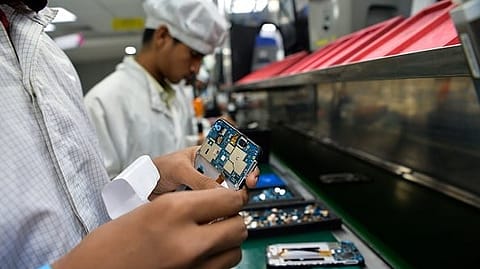25% US tariff to hit India’s ambitions to develop its manufacturing sector: Moody’s
Curtailed access to the largest economy globally diminishes prospects for India’s ambitions to develop its manufacturing sector, particularly in higher value-added sectors such as electronics, says Moody's.

Moody's Ratings has warned that 25% tariffs on Indian goods exported to the US will diminish prospects for India’s ambitions to develop its manufacturing sector, particularly in higher value-added sectors such as electronics.
The revised tariff rate assessed on Indian goods is significantly above those from other major exporters in the APAC region, many of which have been assessed rates of between 15% and 20%.
“Curtailed access to the largest economy globally diminishes prospects for India’s ambitions to develop its manufacturing sector, particularly in higher value-added sectors such as electronics,” said Christian de Guzman, Senior Vice President, Moody's Ratings.
As bilateral negotiations ahead of August 1 failed to yield to a bilateral trade deal, the White House announced a so-called reciprocal tariff rate on Indian exports to the US of 25%. The executive order issued by US President Donald Trump on July 31 puts majority of its trade partners in the 15% additional tariff bracket. Japan, Israel, New Zealand, South Korea, Nigeria etc are all in this category. While Bangladesh, Sri Lanka, Taiwan, and Vietnam face 20% tariff, it is 10% for countries like Brazil and the United Kingdom. Goods from countries such as Cambodia, Indonesia, Malaysia, Pakistan, Philippines, and Thailand will attract 19% tariff. China is not in the current list and US will continue to levy an earlier announced 30% tariff on the goods from that country.
The higher tariffs relative to other countries also disadvantages India as it vies for a greater share of trade and investment flows away from China, which has been subject to even more severe tariff treatment by the US, cautioned Moody’s.
While there appears to be some room to negotiate for lower tariff rates, this is balanced against downside risks from potential “penalty” tariffs associated with India’s purchases of Russian crude petroleum, the ratings agency said.
“At the same time, we expect domestic demand to remain resilient to these external pressures as the Indian economy is less trade-reliant than other large economies in APAC,” it said.
Recommended Stories
Moreover, the favourable outlook for India’s services sector, whose scope and scale are unrivalled in the region, remains intact as associated services exports do not appear to be a major point of contention in bilateral relations with the US, said Moody’s.
Delhi-based trade think-tank, Global Trade Research Initiative (GTRI), estimates the new tariff structure to impact at least $25 billion worth of goods exports from India to the US. The impact could be more if US imposes an additional ‘penalty’ also on Indian exports as a punishment for India’s continued cooperation with Russia, a country that is facing economic sanctions from US due to its war with Ukraine. According to GTRI, even without a ‘penalty’ the 25% tariff alone could see India’s goods exports in FY26 could come down by 30% from $86.5 billion in FY25 to $60.6 billion in FY26.